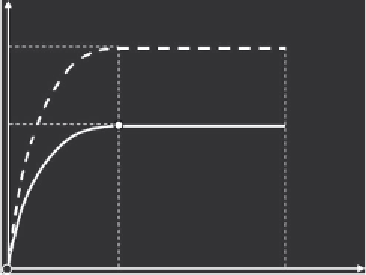Civil Engineering Reference
In-Depth Information
s
c
f
ck,c
f
ck,unconfined
s
1
= f
ck,c
f
cd,c
s
2
s
3
= (
s
2
)
e
c2
e
cu2
e
c
e
cu, unconfined
f
ck
,
c
¼ f
ck
1
ð
:
125 + 2
:
5
s
2
=
f
ck
Þ
for
s
2
>
0
:
05
f
ck
ð
2
:
30
Þ
2
e
c2
,
c
¼ e
c2
f
ck
,
c
=
f
ck
ð
2
:
31
Þ
e
cu2
,
c
¼ e
cu2
+0
:
2
s
2
=
f
ck
ð
2
:
32
Þ
where
s
2
(
¼s
3
) is the effective lateral compressive stress at the ultimate limit
be generated by adequately closed links or cross ties, which reach the plastic
condition due to lateral extension of the concrete.
2.4 NONLINEAR MATERIAL PROPERTIES
OF REINFORCEMENT BARS
2.4.1 General
The third main component of steel-concrete composite bridges is the rein-
forcement bars. Concrete slab decks used in steel-concrete composite brid-
ges are strengthened with either reinforcement bars or prestressing tendons.
In order to model the bridges accurately, it is quite important to understand
the nonlinear material behavior of the reinforcement imbedded in the floor
decks. Once again, when highlighting the nonlinear material behavior of the
reinforcement bars, to use specified values recommended in current codes of
practice to provide a consistent modeling approach is advisable. However, in
the presence of detailed experimental investigations regarding the nonlinear
material behavior of reinforcement bars, the experimental data can be also
incorporated in designing and finite element modeling of the bridges.









Search WWH ::

Custom Search